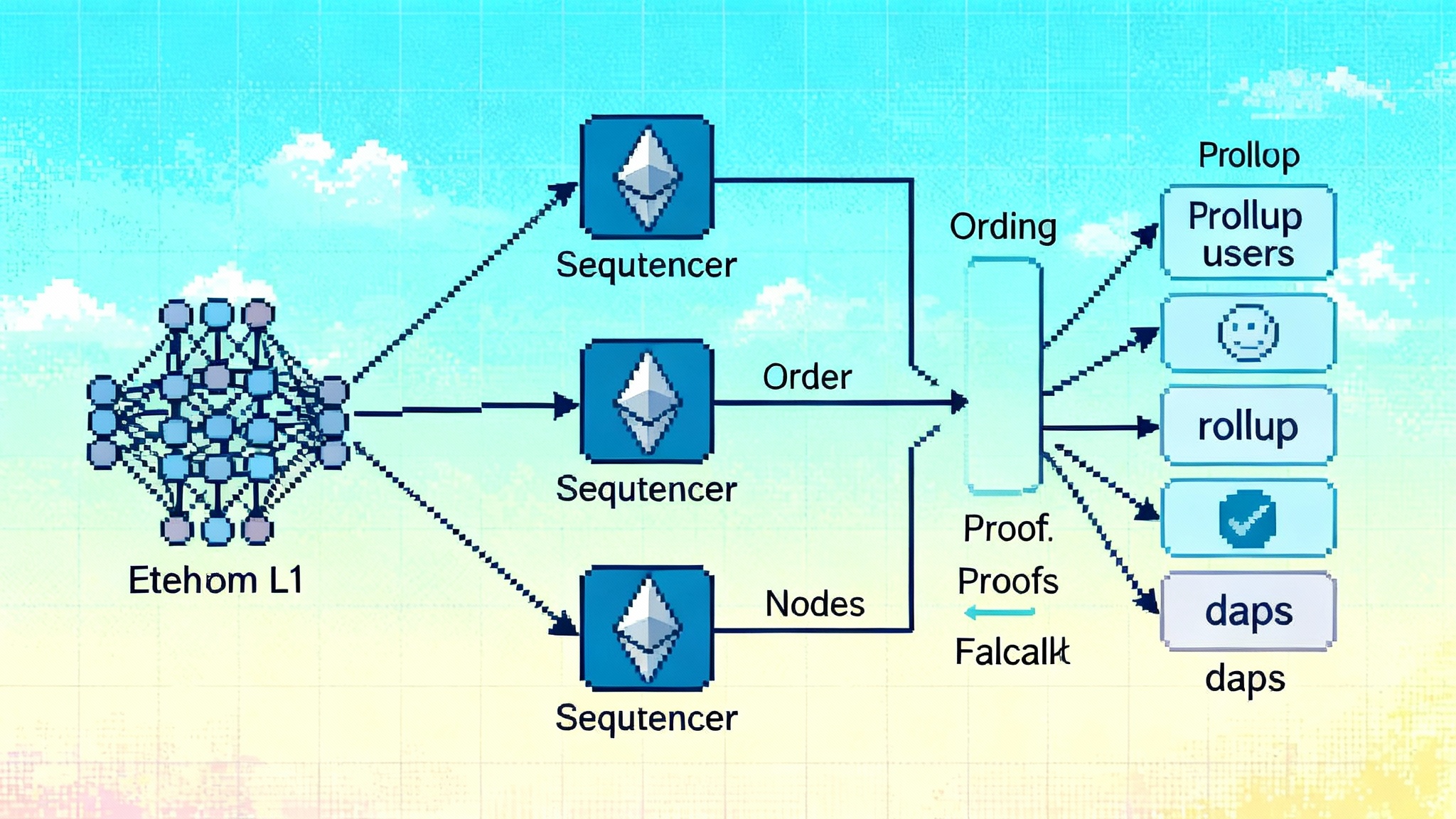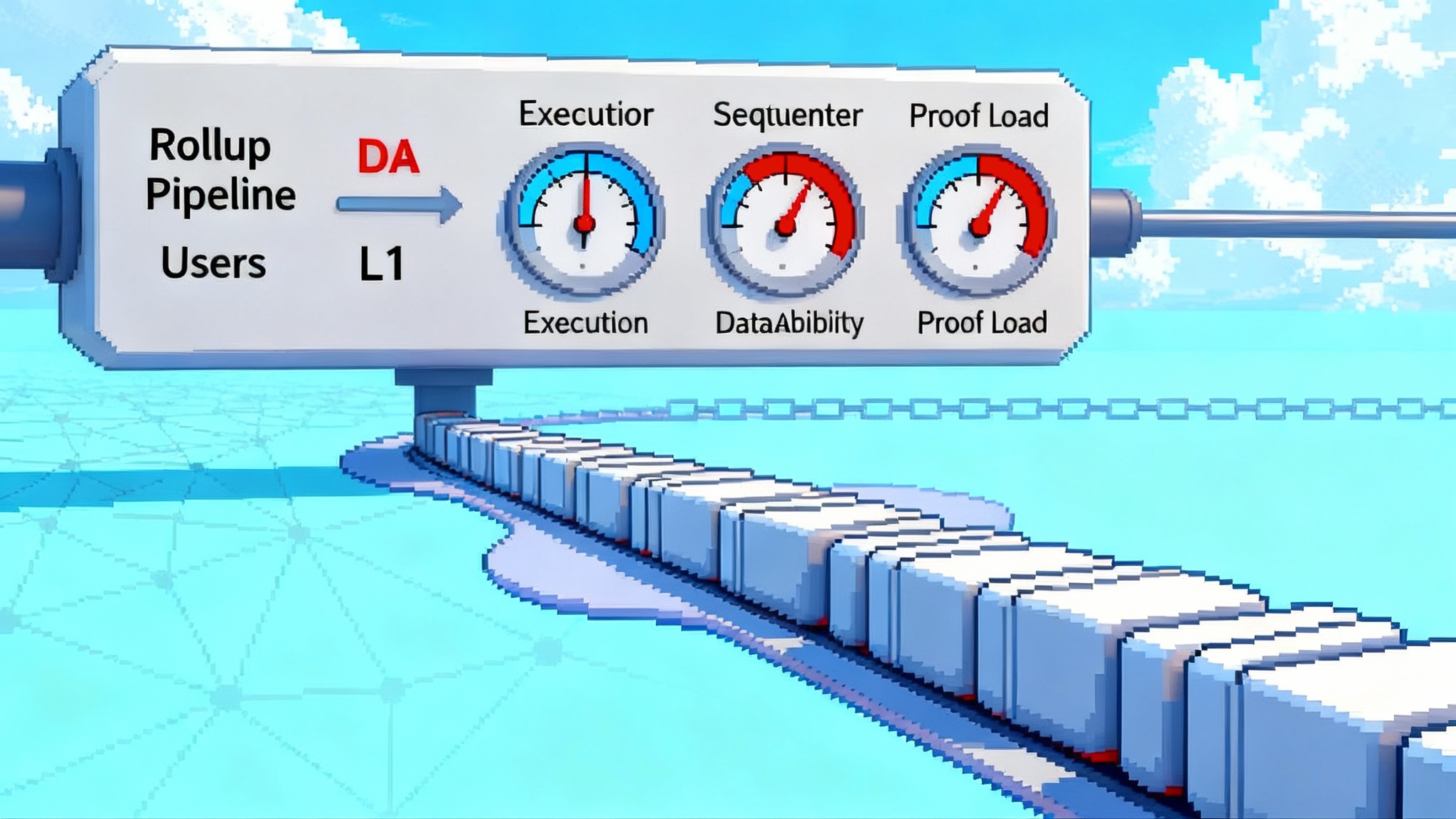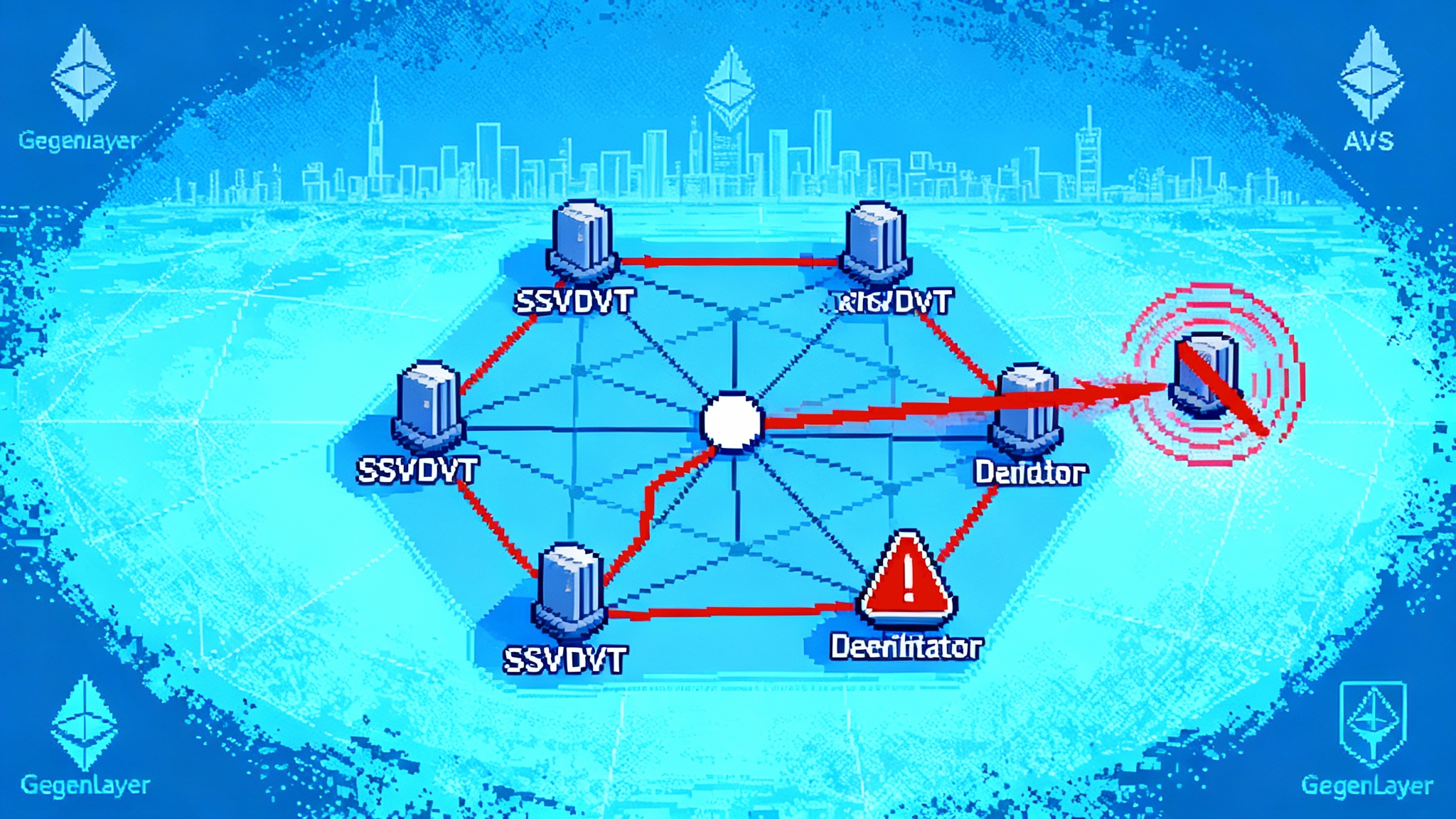Decentralizing L2 Sequencers after Starknet’s Outage
Starknet’s September 2 outage arrived days after moving from one to three sequencers, forcing two reorgs and a hard look at decentralized ordering. Here is what multi‑sequencer designs change for liveness, reorg risk, and MEV, plus practical steps builders and users should take now.

The week decentralized sequencing got real
On September 2, 2025, Starknet suffered an hours long outage shortly after it switched its network from one to three sequencers. Restoring the chain required two reorgs. In a clear postmortem, Starknet tied the event to divergent views of Ethereum across its sequencers, a manual recovery gap, and a bug in the blockifier that updates L2 state. The proving layer prevented incorrect state from being finalized, but users saw halted blocks and rolled back activity. For the underlying chronology and root causes, read the Starknet incident report, Sept 2, 2025.
This piece anchors on that event and then looks at how decentralized sequencing changes the calculus for liveness, reorg risk, and MEV on ZK rollups. We close with practical takeaways for builders and users, and concrete milestones to watch as more teams move from single to multiple sequencers through Q4 2025.
Why sequencers matter more than ever
A sequencer decides transaction ordering for a rollup. In the single sequencer era you traded away some decentralization for simple operations and consistent pre confirmations. If the one sequencer runs, your L2 keeps moving. If it stalls, you wait. In a ZK rollup, the prover later vouches for correctness on L1, but the user experience between a submit and a proof depends on the sequencer path.
Decentralizing the sequencer turns this into a distributed systems problem. Multiple nodes must maintain a consistent view of L1 events, arrive at the same L2 head, and offer predictable pre confirmations to users. You gain fault tolerance and censorship resistance, but you also add consensus, recovery, and observability complexity that was previously hidden inside one box. Related operational risks are not limited to ordering. See how underpriced fees can amplify outages in rollup fee mispricing risks.
Starknet’s pivot from one to three sequencers
Starknet’s move to three sequencers changed its failure modes. The incident shows three important realities:
- L1 view consistency is now a first class dependency. If different sequencers disagree on L1 events because of upstream RPC divergences or transient L1 node issues, block production can stall or split.
- Manual procedures become part of the consensus boundary. Recovery steps that skip validations can create inconsistent L2 blocks that the proving layer later rejects, forcing a reorg.
- The proving layer is a guardrail for correctness, not a UX band aid. ZK proofs prevented the wrong state from finalizing on L1, but the network still needed to roll back unproven L2 blocks to regain a consistent head.
Decentralizing the sequencer increases resilience in the long run, but it raises the bar on engineering discipline around L1 feeds, internal consensus, and rollback processes.
What decentralizing sequencing changes
Liveness
- Single sequencer: liveness is binary and operator bounded. If the sequencer is healthy and posting batches, users get steady pre confirmations. If it halts, you are waiting unless the rollup has a permissionless fallback.
- Multi sequencer: you get crash fault tolerance up to the committee quorum, but you introduce new correlated failure modes. If members see different L1 states, the protocol must stall or resolve the fork. Liveness depends on the internal consensus protocol, the quality and diversity of L1 connectivity, and the automation of failover.
- Shared sequencer networks: multiple rollups outsource ordering to an external committee. Liveness becomes an external service guarantee with its own SLAs and DA dependencies. Your rollup benefits from pooled security and neutral ordering, but you inherit the shared network’s operational posture.
Reorg risk and finality
- Pre confirmations are always conditional. Multi sequencer designs can surface short L2 reorgs if leaders or views change before a batch is proven. BFT style committees may offer stronger local finality than longest chain style approaches, but none of that is L1 finality. ZK proofs still define the final checkpoint that users and bridges can depend on.
- Operational reorgs may increase with decentralization until processes harden. The Starknet event highlighted that manual recovery can create conflicting L2 blocks, which the proving layer later rejects. That is a healthy safety net, but it means application builders must be reorg aware even on ZK rollups.
MEV and ordering policy
- A single sequencer can centralize MEV capture and might adopt fair ordering or commit reveal to mitigate. Multi sequencer committees complicate MEV policy because ordering is shared. Designs can integrate auction based leader selection, proposer builder separation, or commit reveal rounds across the committee.
- Shared sequencers make MEV and cross rollup atomicity a network level concern. If many rollups share the same ordering layer, you can support top of block auctions, soft guarantees for atomic multi rollup transactions, and neutral inclusion policies. The tradeoff is policy governance and fee market design at the shared layer.
Alternatives shipping today
1) Starknet’s three sequencers with a proving backstop
Starknet now runs multiple sequencers that coordinate to produce L2 blocks, with the proving layer on Ethereum as the ultimate arbiter of correctness. The September 2 incident shows this path works but requires precise engineering around L1 feeds, automatic health checks, and recovery that avoids human error. Expect Starknet to iterate on internal consensus parameters, add safety automation, and widen participation as the software and operations mature.
What this means in practice:
- Pre confirmations become slightly softer until the internal consensus is clearly proven in production.
- Users should understand that a pre confirmation is not L1 finality. Withdrawals and cross domain actions should be timed against proof publication.
- Builders must handle L2 reorgs in indexing and settlement logic and be ready to replay or resubmit.
2) Shared sequencers on mainnet, led by Astria
Shared sequencers move ordering out of the rollup and into a neutral network that many rollups can plug into. Astria runs a decentralized shared sequencing layer on mainnet, built to be permissionless to join as a sequencer and to provide censorship resistant, low latency ordering for connected rollups. For rollups that do not want to operate a committee themselves, this is a shortcut to decentralized ordering with pooled neutrality.
What this buys you:
- Out of the box censorship resistance and a path to atomic cross rollup execution for rollups on the same shared layer.
- An external fee market and potential MEV policy that is consistent across connected rollups.
- Operational separation between your execution stack and the ordering service, which may simplify node operations but requires strong observability of the shared layer.
Tradeoffs to internalize:
- You inherit the shared network’s liveness profile and DA dependencies. If the shared layer stalls, your rollup stalls too.
- Governance and upgrades of the shared layer become outside dependencies. Aligning on MEV policy and inclusion rules is a multi tenant negotiation.
3) Scroll’s Stage 1 anti censorship and fallback
Scroll’s Euclid upgrade shipped a set of mechanisms often called Stage 1 by the industry. Two items matter most for sequencer decentralization readiness: enforced transaction inclusion from L1 and permissionless batch submission. The first lets users force a transaction into L2 by enqueuing it on Ethereum. The second lets anyone step in to post and finalize batches if the sequencer stalls. Both mechanisms harden liveness and reduce censorship risk. For details and timelines, see Stage 1 mechanisms in Euclid.
What this buys you:
- A credible backstop against a dishonest or down sequencer without immediately running a multi node committee.
- A clear user escape hatch that wallets and dapps can standardize on.
Tradeoffs to internalize:
- You still have a single operator most of the time, so MEV policy and day to day liveness remain concentrated until a committee arrives.
- Permissionless batch submission is a safety valve, not the default path. Node runners and tooling must be ready for the edge case.
4) zkSync’s committee based ChonkyBFT
zkSync has introduced a committee based BFT consensus called ChonkyBFT for sequencing. Committee based BFT can deliver single slot local finality under partial synchrony, with explicit quorum and fault assumptions. In practice this gives users strong pre confirmations and predictable latency even with multiple sequencers. The open questions are around committee composition, rotation frequency, and the path to permissionless participation, all of which define how decentralized the ordering really is.
What this buys you:
- Stronger local finality and lower reorg probability than longest chain style approaches.
- A clear safety story that pairs well with ZK proofs for L1 finality.
Tradeoffs to internalize:
- Operational complexity in committee management and key rotation.
- MEV and inclusion policy must be defined at the committee layer, with governance that can evolve without disrupting safety.
Practical takeaways for builders
- Use forced transaction paths by default. If your L2 supports an L1 enqueue path, expose it in wallet and dapp flows for high value transactions. This reduces censorship risk and gives users a clear option when a sequencer is flaky.
- Adopt inclusion lists and commit reveal patterns for fair ordering. Inclusion lists make it harder to front run or censor transactions during leader proposals. Commit reveal can blunt basic ordering games. Both work with centralized or decentralized sequencers. For latency targets that improve UX expectations, compare with Solana's sub 150ms finality push.
- Add RPC and provider diversity for L1 reads. Connect every sequencer and full node to multiple independent Ethereum providers with health checks and quorum reads. Detect and quarantine divergent L1 views before they compromise block production.
- Build L1 event consistency checks. Compare critical L1 inputs against multiple sources and refuse to advance if the variance exceeds a threshold. Treat message queues, bridge events, and state roots as high integrity inputs that warrant extra validation.
- Make your indexers and relayers reorg aware. Cache idempotently, track block ancestry, and design replay safe handlers for deposits, fills, and liquidations. Test against synthetic one to two block reorgs and longer rollbacks from operator errors.
- Expose pre confirmation status in your UI. Teach users the difference between pre confirmed, committee finalized, and L1 proven. For money movement, surface an estimated proof window and link to a proof tracker when available.
- Diversify RPC endpoints for your users. Offer multiple default RPCs and auto failover at the client level. Do not single home to one public endpoint for writes or reads.
- Add circuit breakers to cross domain apps. If an L2 halts or reorgs beyond a threshold, pause risky actions, widen price bounds for oracles carefully, and stage withdrawals to L1 until proofs catch up.
- Monitor L1 and L2 health signals. Track sequencer leader changes, missed slots, L1 message lag, and proof queues. Alert on variance across providers, not just absolute failure. For validator level safety culture, study Ethereum slashing and DVT risk.
Practical takeaways for users and investors
- Calibrate finality assumptions. A sequencer pre confirmation or even a local BFT commit is not the same as an L1 proof. Treat large transfers and cross chain actions as final only after the proof lands on L1.
- Price in proof latency. ZK systems vary widely in proof generation times. Withdrawals and cross domain arbitrage should be planned around typical and worst case proof windows.
- Know your censorship escape hatches. If your L2 has an L1 force inclusion queue, learn how to use it and which wallets expose it. If it has permissionless batch submission, understand the trigger conditions.
- Understand composability boundaries. Shared sequencers promise near atomic cross rollup actions within their network. Independent L2s without a shared ordering layer remain asynchronously composable through bridges, with latency and risk that depend on proofs.
- Evaluate decentralization by what is live today. Stage 1 features change your trust model even before a full committee is deployed. Committee based designs change it further once membership and rotation are permissionless.
- Watch MEV policy and fee markets. Pay attention to whether an L2 or shared sequencer adopts proposer builder separation, auctions, or inclusion lists. These choices affect user fairness and long term revenue splits.
The road to resilient ZK rollups in Q4 2025
Here are concrete milestones that move the space forward over the next quarter:
- Starknet internal consensus hardening. Look for releases that add automatic safety checks around L1 provider divergence, reduce manual recovery scope, and increase the number of nodes in the internal consensus to improve fault tolerance. Public status around opening sequencer participation or adding watchtower roles would be meaningful.
- Proving pipeline visibility. Expect clearer public dashboards for proof queues and latencies on major ZK rollups. Tighter SLOs for proof times will help wallets show accurate finality estimates.
- Scroll Stage 1 in daily practice. Beyond the upgrade itself, watch for wallet integrations that expose L1 force inclusion, and for the first real world trigger of permissionless batch submission during a planned exercise or incident response drill.
- zkSync committee rotation and openness. Track committee size, rotation cadence, and criteria for joining. Movement toward permissionless or at least a broad, independent set of operators will mark real decentralization.
- Shared sequencer adoption. Count the number and diversity of rollups using a shared sequencing network in production, plus the first production scale atomic actions across two independent rollups on the same layer.
- Inclusion list standards. Movement toward common transaction inclusion list formats across L2s and shared sequencers would reduce integration overhead and improve wallet UX.
- L1 event reliability improvements. Broader use of quorum reads, beacon API diversity, and standardized consistency checks for L1 bridges and message queues will reduce correlated failures.
- Postmortem quality and drills. Teams that publish precise incident reports and run scheduled halt and reorg drills will build the most trust with users and integrators.
Bottom line
Decentralizing the sequencer is the right long term move for ZK rollups, but it is not free. The Starknet outage showed that correctness was preserved by proofs while user facing liveness took a hit, and that is a tradeoff teams must manage with rigor. The winning architectures will pair diversified L1 connectivity and battle tested internal consensus with user escape hatches and honest, automated recovery. Builders should wire in forced paths and reorg awareness now. Users should price in proof latency and seek systems whose liveness guarantees are backed by real mechanisms, not promises.
The path is clear. Over Q4 2025, watch which L2s turn decentralization from a roadmap item into a routine, observable practice.








